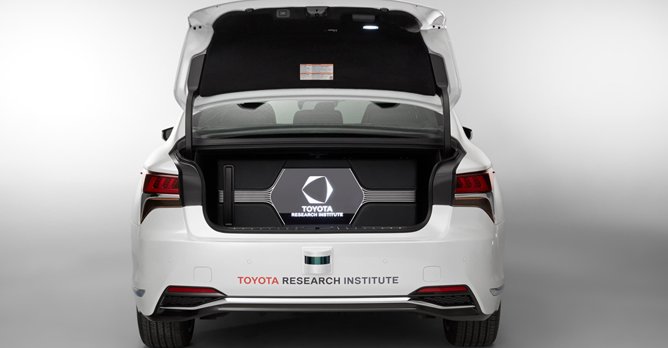Toyota Research Institute rolls out P4 automated driving test vehicle
06 Jan 2019|1,383 views
The P4 is based on the all new fifth generation Lexus LS flagship sedan and will be used in the company's two-track Guardian and Chauffeur automated driving system development. The P4 benefits from Lexus' new generation of chassis and steering control technology, which provides greater agility and allows for more responsive and smoother manoeuvres during automated driving.
The P4 adds two additional cameras to improve situational awareness on the sides and two new imaging sensors - one facing forward and one pointed to the rear - specifically designed for autonomous vehicles. The imaging sensors feature new chip technology with high dynamic range.
The radar system has been optimised to improve the field of view, especially for close range detection around the vehicle perimeter.
The sensing system with eight scanning heads carries over from the previous test model, Platform 3.0, and morphs into the new vehicle design. With greater computing power, its systems can operate more machine learning algorithms in parallel for faster learning. It can process sensor inputs faster and react more quickly to the surrounding environment.
All computing system power is now drawn from the vehicle's hybrid battery with the 12V battery now serving only as a backup.
The compute box in the trunk, which serves as the 'brain' of the automated driving system, has been reimagined. It is now tucked vertically against the rear seat transom, folding down to access the circuitry. This frees up the entire floor of the trunk for hauling cargo.
The P4 is based on the all new fifth generation Lexus LS flagship sedan and will be used in the company's two-track Guardian and Chauffeur automated driving system development. The P4 benefits from Lexus' new generation of chassis and steering control technology, which provides greater agility and allows for more responsive and smoother manoeuvres during automated driving.
The P4 adds two additional cameras to improve situational awareness on the sides and two new imaging sensors - one facing forward and one pointed to the rear - specifically designed for autonomous vehicles. The imaging sensors feature new chip technology with high dynamic range.
The radar system has been optimised to improve the field of view, especially for close range detection around the vehicle perimeter.
The sensing system with eight scanning heads carries over from the previous test model, Platform 3.0, and morphs into the new vehicle design. With greater computing power, its systems can operate more machine learning algorithms in parallel for faster learning. It can process sensor inputs faster and react more quickly to the surrounding environment.
All computing system power is now drawn from the vehicle's hybrid battery with the 12V battery now serving only as a backup.
The compute box in the trunk, which serves as the 'brain' of the automated driving system, has been reimagined. It is now tucked vertically against the rear seat transom, folding down to access the circuitry. This frees up the entire floor of the trunk for hauling cargo.
Latest COE Prices
September 2025 | 1st BIDDING
NEXT TENDER: 17 Sep 2025
CAT A$107,889
CAT B$127,501
CAT C$71,556
CAT E$127,901
View Full Results Thank You For Your Subscription.




















